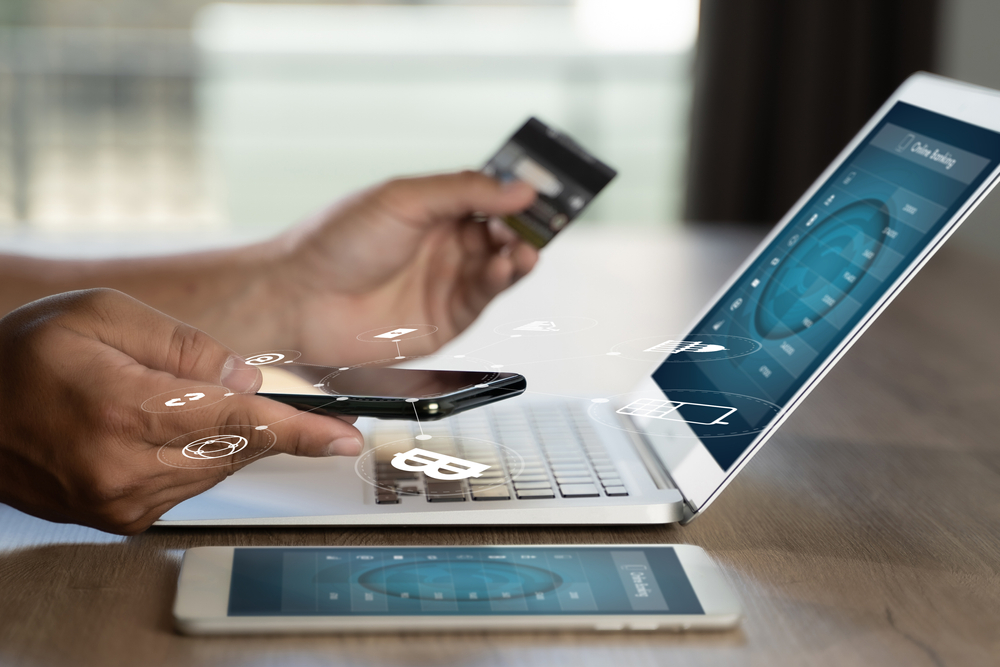- Home
- Whitepapers, reports & articles
- Do FIs really need a Mobile App?
Do FIs really need a Mobile App?

Contents
19 August 2025
In boardrooms and strategy sessions across the financial industry, a question keeps coming up: Do we really need a mobile app? With tight budgets, legacy systems and evolving customer demands, the answer can seem complicated.
But here’s the reality: mobile banking is no longer optional. It has shifted from a nice-to-have to an essential channel. A fundamental part of how people live, work, and manage their finances in their daily lives.
Banking On-the-Go: The New Customer Standard
A decade ago, the idea of mobile banking was innovative. Now, it’s non-negotiable.
In the recent years, industries across board have seen an accelerated move toward digital channels and remote access. Suddenly, digital banking wasn’t just a convenience, it was a necessity. It cemented a new expectation: customers want to access their money on their own terms, without needing to visit a branch or wait in a call queue.
A recent YouGov survey of 2,000 UK adults revealed that over 80% check their banking app weekly, highlighting how essential mobile access has become.
This trend isn't limited to the UK; data from Forrester's 2024 report shows that 75% of Australian online adults who are banking customers use mobile app for their banking needs.
Today’s banking customer assumes you have a mobile app. What they’re really asking is:
Does it do what I need - quickly, intuitively and securely?
That brings us to a deeper question:
If mobile is the default, what makes your app stand out? And why should financial institutions invest in mobile-first strategies?
Mobile-First Banking
The idea of visiting a branch to check a balance or transfer money feels almost foreign to a new generation of customers. Even among older demographics, mobile is often the preferred channel not just for convenience, but because it feels simpler, faster and more secure.
Mobile banking apps today are secured by biometrics and protected with multiple layers of authentication. Unlike internet banking, they’re not exposed to the same kinds of vulnerabilities. In many ways, they’re the most secure digital channel a bank can offer. When a customer can check their balance with a fingerprint and move money instantly at 2 a.m., convenience and security don’t just coexist, they empower each other.
But this is just one part of the equation. The real driver of mobile banking adoption is something far simpler: control.
Customers want to manage their money on their terms. That means:
- Anytime access to their accounts
- The ability to move money or pay bills on the go
- Self-service tools to manage cards, check balances, update details or set goals
This kind of flexibility builds trust, reduces friction, and increases engagement. That’s why mobile-first strategies are no longer just for neobanks, they’re for everyone.
Not Just Neobanks. It’s Expectations You’re Up Against
It’s important to make a distinction here. Most traditional financial institutions aren’t trying to become neobanks. They don’t want to lose the community-first identity or scale back the service offering they’ve built, nor should they.
But even within that model, customers still expect mobile access. It’s not about replacing in-person service. It’s about complementing it. It’s about meeting customers where they are both geographically and digitally and enabling your service model to scale.
This is why mobile banking apps are no longer just operational tools. They’re strategic business assets. They open new sales channels, reduce cost to serve and create always-on opportunities to connect with customers.
But here’s the challenge: building and maintaining a mobile banking app that meets these expectations is not easy.
Sandstone Technology’s BankFast Mobile App
Let’s get straight to the point. The real differentiator isn’t just what a mobile app can do it’s how quickly and flexibly you can deliver it to market, and keep it maintained now and into the future. For financial institutions facing complex legacy systems, tight timelines and rising customer expectations, finding the right mobile solution is critical.
That’s where a platform like Sandstone Technology’s BankFast Mobile App can make a real difference.
BankFast Mobile App vs. Others
| Feature / Capability | BankFast Mobile App | Others |
| Core System Dependency | Core-agnostic – works with your existing core | Often requires specific core system or full-stack change |
| Deployment Timeline | Rapid – live in under 6 months | 12–24 months typical, with longer integration timelines |
| Branding & Customisation | Fully white-labelled to your institution’s brand(s) | Limited white-labelling or templated designs |
| Security & Compliance | Managed by Sandstone Technology – fully embedded and up-to-date | Often requires internal resourcing or third-party audits |
| Functionality | Comprehensive self-service with secure login, profile management, and support for diverse products and transactions | Varies widely – may lack full feature parity |
| Customer Experience | Intuitive, app-rated 4.2 on average across App Stores | Experience varies; many struggle with poor UX ratings |
| System Integration | Integration across host systems and third-party vendors via APIs | Often requires new layers or system overhauls |
| Digital Brand Expansion | Launch new digital brands quickly under one platform | Typically, not built to support rapid spin-offs |
| Sales & Cross-sell Enablement | In-app offers, lead capture, and campaign-ready roadmap | Often limited to basic transaction functionality |
| Ongoing Innovation & Support | Continuous platform upgrades, innovation roadmap, regulatory compliance and security uplift | Upgrades may be infrequent, complex, or costly |
| Cost to Implement & Maintain | Optimised for value – lower Total cost of Ownership (TCO) with faster return on value | High upfront and long-term integration & maintenance cost |
What’s Next for the BankFast Mobile App
Today, the BankFast Mobile App empowers its customers with robust, secure self-service features but the journey doesn’t stop there.
We’ve been steadily expanding what’s possible within the mobile channel. Rapid Leads enables customers to perform a product enquiry through the mobile app with qualifying questions to generate qualified leads against ANY banking product. Shortly, that capability will extend into Apply Lite allowing customers who haven’t yet applied for a banking product to do so directly within the app, easily and intuitively.
From there, we’re moving toward full straight-through processing (STP), meaning accounts can be opened and funded immediately, without any human intervention or follow-up.
But it doesn’t stop at onboarding. The future is also about engagement.
Soon, you’ll be able to run targeted, campaign-based offers within the mobile app - pushing out promotions like “digital-only” products or special interest rates for customers who apply through the mobile channel. It turns your app into not just a servicing tool, but a dynamic acquisition and marketing engine.
In short, Sandstone Technology’s BankFast Mobile App is evolving not just for you to keep pace, but to keep you ahead.
But, do I Really Need a Mobile App?
If you're still asking that question, you're already behind.
Mobile banking apps are the channel customers rely on. It’s a direct line to their attention, their trust, and their loyalty. And if done right, it’s also your shortest path to growth.
At Sandstone Technology, we have helped organisations across the globe launch their own mobile banking app in under six months, seamlessly integrated with their existing systems. The app is built to be intuitive and inclusive, because a digital channel only works if it works for everyone.
Contact our team to find out more.
Read more
- All
- Article
- Whitepaper
- Reports
























.jpg)











.jpg)

.jpg)


.jpg)
.jpg)


